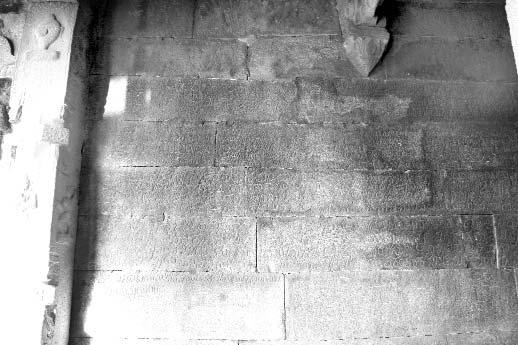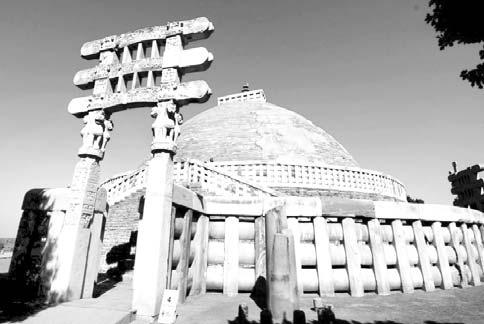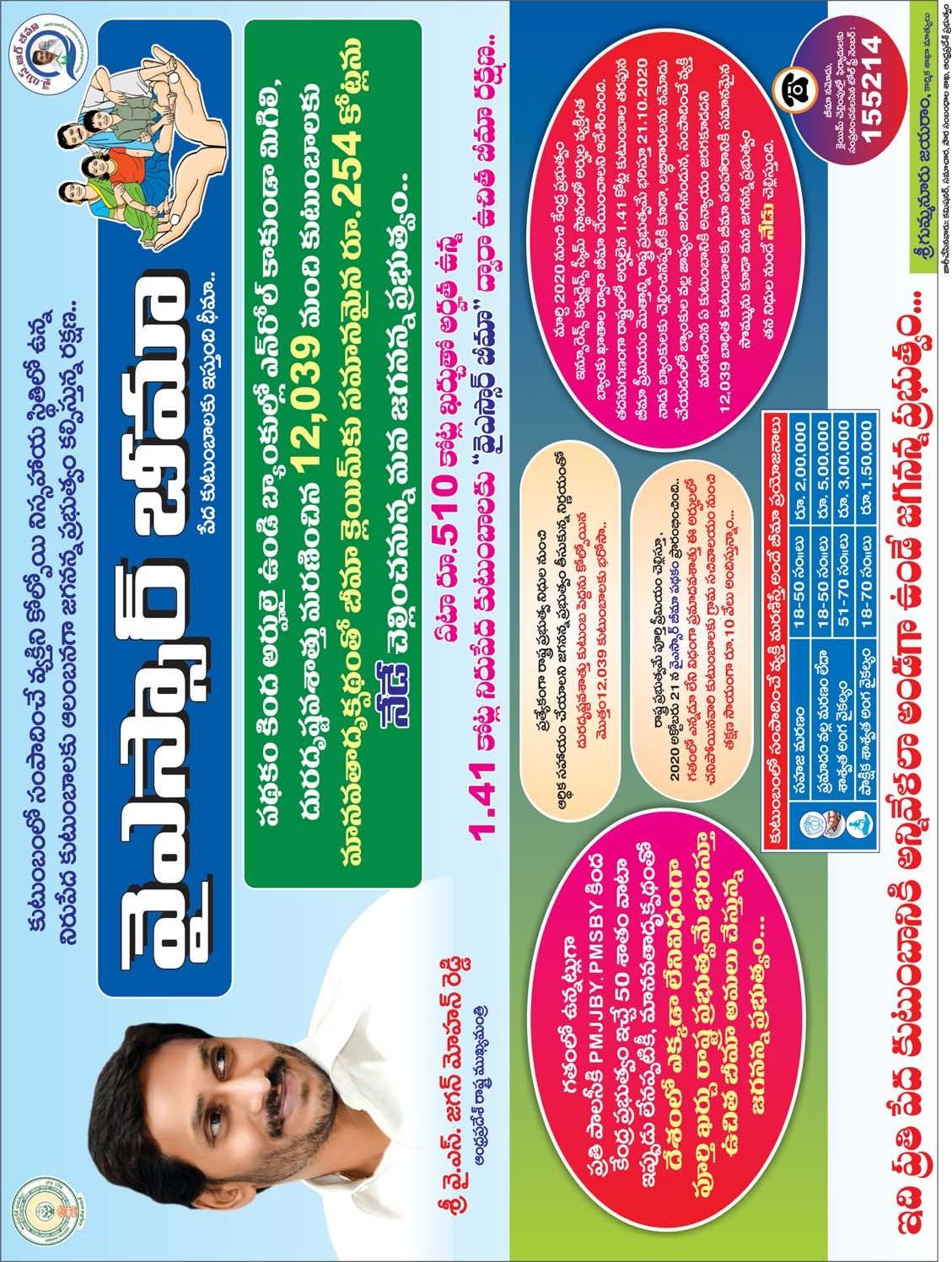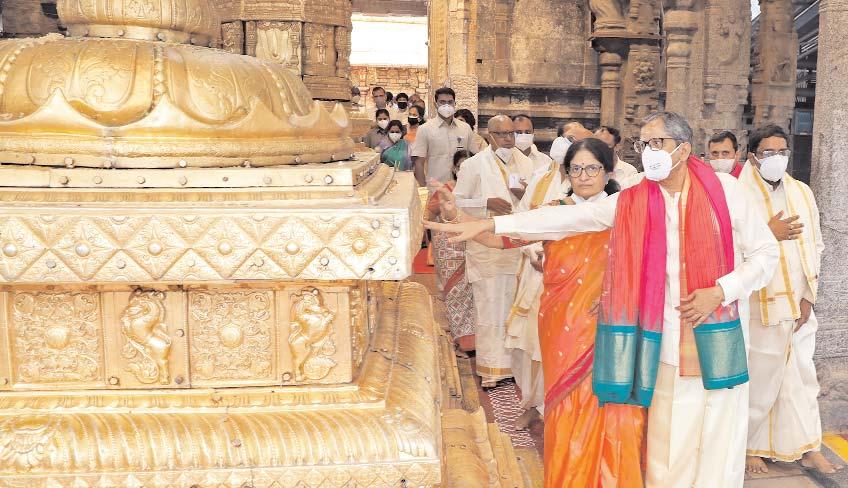
17 minute read
nq+‘·X¯j·Tq >∑T&ç
yÓTÆHêkÕ«$T
$»j·Tq>∑s¡ kÕÁe÷»´ #·Áø£e]Ô lÁøÏwüí<˚esêj·T\T (Áø°.X¯. 1509`29) ‘·q bÕ\Hê ø±\+˝À e+<ä˝≤~ <˚yê\j·÷\qT ø£{Ϻ+#ê&ÉT. y˚˝≤~ >∑Tfi¯flqT $düÔ]+|ü#˚XÊ&ÉT. ñ<äj·T–] <äTs¡Z+ô|’ kÕ~Û+∫q $»j·÷ìøÏ >∑Ts¡TÔ>± Vü≤+|æ˝À ÁøÏcÕí\j·÷ìï ì]à+#ê&ÉT. ‘·÷s¡TŒ <˚X¯ ~–«»j·T <ä+&Éj·÷Á‘·≈£î ì<äs¡Ùq>± Vü≤+|æ $sƒ¡˝≤\j·÷ìï uÛ≤Ø>± $düÔ]+#ê&ÉT. ‘·*¢ Hê>∑˝≤<˚$ Äq‹ y˚Ts¡≈£î ∫‘·÷Ôs¡T õ˝≤¢ Hê>∑˝≤|ü⁄s¡+˝À y˚<äHêsêj·TDkÕ«$T >∑T&çì n<äT“¤‘·+>± |ü⁄qsY ì]à+#ê&ÉT. ø=&ÉT≈£î ` ‹s¡TeT\<˚e eTVü‰sêj·T\qT Äπs+&É¢ ej·TdüT˝À sêE>± Á|üø£{Ï+∫q dü+<äs¡“¤+>±.. |ü⁄Á‘·Tì >ös¡yês¡ú+ ªnq+‘·X¯j·Tq>∑T&çμì Vü≤=düù|≥˝À ø£{Ϻ+#ê&ÉT. l eTVü‰$wüßíe⁄ X¯j·Tq uÛÑ+–eT˝À e⁄qï q\¢sê‹ $Á>∑Vü‰ìï n‘·´<äT“¤‘·+>± eT*|æ+∫Hê.. >∑T&ç˝À Á|ü‹wæ˜+#·˝Òø£ b˛j·÷&ÉT. nq+‘·kÕ«$T uÛ≤Ø $Á>∑Vü‰ìï ø=\Te⁄ Bs¡Ã&É+ ø√dü+ >∑s¡“¤>∑T&çì uÛ≤Ø>± r]Ã~<ë›&ÉT. ãVüQX¯: <˚X¯+˝Àì @ <˚yê\j·T+˝Àq÷ n+‘·ô|<ä› >∑s¡“¤>∑T&ç e⁄+&É<ä+fÒ n‹X¯jÓ÷øÏÔ ø±<˚yÓ÷! >∑s¡“¤>∑T&çøÏ eT÷&ÉT ‘·\T|ü⁄\THêïsTT. >∑s¡“¤>∑T&çô|’ >∑\ $e÷q •Ks¡+.. e÷eT÷\T $e÷q •Usê\≈£î _Ûqï+>± e⁄+~. bı&Ée⁄>± Ä~X‚wüßì bÕqT|ü⁄ e÷~]>± e⁄+~. eTVü‰eT+&É|ü+˝Àì •\Œ+ m+‘√ u≤>∑T+~. nq+‘·X¯j·Tq >∑T&ç |üø£ÿH˚ neTàyê] ø√yÓ\ ø£\<äT. ñ‘·‡e eT+&É|ü+ Á|ü‘˚´ø£+>± e⁄+~. nq+‘· X¯j·Tq >∑T&çøÏ ˇø£ Ä\j·÷ìøÏ e⁄+&Ée\dæq nìï Vü≤+>∑T\÷ e⁄HêïsTT. l ÁøÏwüí<˚esêj·T\ J$‘·+˝À n‘·´+‘· eTTK´yÓTÆq~...Ä >∑T&ç. ø±˙ dü+<äs¡Ù≈£î\T e÷Á‘·+ #ê˝≤ ‘·≈£îÿe>± yÓfi¯ófl‘·T+{≤s¡T. $»j·Tq>∑s¡ kÕÁe÷»´ sê»<Ûëì ` Vü≤+|æ q>∑sêìï ì‘·´+ y˚˝≤~ eT+~ |üsê´≥≈£î\T dü+<ä]ÙdüTÔ+{≤s¡T. nsTT‘˚ nq+‘·Tì Ä\j·T+ >∑T]+∫ yê]øÏ n+‘·>± ‘Ó*j·T<äT. Ä >∑T&çì #·÷&Éø£b˛‘˚ Vü≤+|æ |üs¡´≥q dü+|üPs¡í+ ø±<äT. Vü≤+|æøÏ yÓ[flq|ü⁄&ÉT Vü≤=düù|≥≈£î 1.6øÏ.MT. <ä÷s¡+˝Àì nq+‘·X¯j·Tq >∑T&çì ‘·|üŒø£ #·÷&Ü*. nq+‘·X¯j·Tq>∑T&çô|’ ≥÷]»+ q÷´dt Á|ü‘˚´ø£ ø£<∏äq+ á $<Ûä+>± e⁄+~.
Advertisement
ø£sêï≥ø£˝Àì Vü≤+|æ˝À <ë<ë|ü⁄ 350 >∑Tfi¯óflqï≥Tº n+#·Hê. n+<äT˝À $s¡÷bÕø£å kÕ«$T Ä\j·T+, $sƒ¡˝≤\j·T+, ÁøÏwüßíì ø√yÓ\, Vü≤C≤s¡ sêeT <˚yê\j·T+, nq+‘·X¯j·Tq>∑T&ç n‘·´+‘· eTTK´yÓTÆq$. Ä Ä\j·÷\T ÁøÏwüí<˚esêj·T\≈£î #ê˝≤ ÇwüºyÓTÆq$. Vü≤C≤s¡sêeT>∑T&ç πøe\+ sê» ≈£î≥T+ã+ ø√dü+ e÷Á‘·y˚T ì]à+∫q~. l eTVü‰$wüßíe⁄≈£î eTVü‰ uÛÑ≈£îÔ&Ó’q lÁøÏwüí<˚esêj·T\T nq+‘·|ü<äàHêuÛÑ kÕ«$T ø√dü+ Vü≤+|æ˝À Á|ü‘˚´ø£+>± ˇø£ >∑T&çì ø£{Ϻ+#ê\ì dü+ø£*Œ+ #ê&ÉT. n+‘·≈£î eTTqTù| ‘·q ‘·*¢ Hê>∑˝≤+ã ù|s¡T MT<ä ø=‘·Ô |ü≥ºD+ ` Hê>∑˝≤|ü⁄s¡+qT ì]à+#ê&ÉT. Vü≤+|æ |üø£ÿH˚ eTs√ |ü≥ºD+ yÓ\dæ+~. Hê>∑˝≤|ü⁄s¡+qT Vü≤=düù|≥ nì ø£qï&É˝À |æ*#˚yês¡T. ∫es¡≈£î Vü≤=düù|≥>± dæús¡|ü&ç+~. ÁøÏwüísêj·T\T ‘·q uÛ≤s¡´ ù|s¡T MT<ä Hê>∑˝≤|ü⁄s¡+ nH˚ ø=‘·Ô |ü≥ºD≤ìï ì]à+#ê&Éì b˛s¡TÃ^düT >∑TÁsê\ yê´bÕ] ô|òsêïyé q÷´ìCŸ ‘·|ü⁄Œ>± sêXÊ&ÉT. q÷´ìCŸ Áø°.X¯. 1535`1537 dü+e‘·‡sê\ eT<Ûä´ $»j·Tq>∑s¡+ (Vü≤+|æ)˝À |üs¡´{Ï+#ê&ÉT. ø=‘·Ô |ü≥ºD+˝À ˇø£ ô|<ä› >∑T&ç e⁄+&Ü\ì uÛ≤$+∫q sêj·T\T nq+‘·|ü<äàHêuÛÑ kÕ«$T ø√dü+ nq+‘·X¯j·Tq >∑T&çì Áø°.X¯. 1524˝À ø£{Ϻ+#ê&ÉT. ‘·q ≈£îe÷s¡T&ÉT ‹s¡TeT\<˚eeTVü‰sêj·T\T |ü{≤º_Ûwæ≈£îÔ&ÉsTTq dü+<äs¡“¤+>± nq+‘·X¯j·Tq >∑T&ç s¡÷|ü⁄ ~<äT›ø=qï~. H˚|ü<∏ä´+ : lÁøÏwüí<˚esêj·T\≈£î ‹s¡TeT\ <˚$ ` ∫qïe÷<˚$ uÛ≤s¡´\T. ‹s¡TeT\ <˚$øÏ ‹s¡TeT˝≤+ã, ∫qïe÷<˚$øÏ yÓ+>∑fi≤+ã |ü⁄Á‹ø£\T ø£*>±s¡T. ˇ]kÕ‡ >∑»|ü‘·T\ ÄBÛq+˝Àì ñ<äj·T–], ø=+&ÉM&ÉT, ø=+&É|ü*¢ qT+∫ ø£≥ø£+ <ëø± |ü\T <äTsêZ\qT Áø°.X¯. 1515 `16˝À »sTT+#ê&ÉT. ˇ]kÕ‡sêE Á|ü‘ê|üs¡TÁ<ä >∑»|ü‹ ≈£îe÷¬sÔ nqï |üPs¡í<˚$ (‘·TU≤â<˚$ eTs√ù|s¡T) ì sêj·T\T eT÷&√ uÛ≤s¡´>± d”«ø£]+#ê&ÉT. ‘·eT≈£î ø=&ÉT≈£î\T ø£\>±\ì m+<äs√ <˚e⁄fi¯flqT y˚&ÉTø=Hêïs¡T ‹s¡TeT\ <˚$ ` ∫qïe÷<˚$. ÁøÏwüísêj·T\ |ü≥º|ü⁄sêDÏ ` ‹s¡TeT\ <˚$ Ä»„Á|üø±s¡+ eT+Á‹ sêj·Tdü+ø=+&ÉeTs¡Tdüj·T´ ô|qTø=+&É sê»´+˝Àì #√fi¯ düeTTÁ<ä+ Á>±eT+˝À yÓ\dæq #Í&˚X¯«]e÷‘· >∑T&ç˝À Á|ü‘˚´ø£ |üP»\T #˚sTT+#ê&ÉT. #Í&ÉeTà ‘·*¢øÏ sêj·T\yê] ‘·s¡|ü⁄q ø±qTø£\T düeT]Œ+#ê&ÉT. n+<äT≈£î dü+ã+~Û+∫q XÊdüq+ #Í&ÉeTà <˚yê\j·T+ eTT+<äT e⁄+~. XÊdüq+ Áø°.X¯. 1517 &çôd+ãsY 1 Hê{Ï~. XÊdüq uÛ≤wü ø£qï&É+. ‹s¡TeT\<˚$ì ‹s¡TeT˝≤+_ø£>± ù|s=ÿHêïs¡T. XÊ*yêVü≤q X¯ø£es¡¸+ 1439 áX¯«s¡ HêeT dü+e‘·‡s¡+ e÷s¡Z•s¡ ãVüQfi¯ ‘·~j·THê&ÉT ªªÁøÏwüísêj·T eTVü‰ sêj·T]¬> dü+‘êHê_Ûeè~∆ j·÷>∑ uÒ¬ø+<äTμμ nì #Í&ÉeTàqT ÁbÕ]ú+#ê&ÉT ø=+&ÉeTs¡düj·T´. eTVü‰eT+Á‹ ‹eTàs¡TdüT ø=&ÉTπø ø=+&ÉeTs¡düT. #√fi¯ düeTTÁ<ä+ #Í&ÉeTà ‘·*¢ì Äsê~Û+∫q @&ÉT HÓ\\ ‘·sê«‘· ‹s¡TeT\ <˚$øÏ
\ø°åà<˚$ >∑T&ç

ø=&ÉT≈£î |ü⁄{≤º&ÉT. ÁøÏwüísêj·T\ dü+‘êq+ >∑T]+∫ yÓTÆdü÷s¡T <˚X¯+˝À XÊdüq+ yÓ\dæ+~. yÓTÆdü÷s¡T <ä>∑Zs¡ >∑\ >∑T+&ÉT¢ù|≥≈£î 12øÏ.MT. <ä÷s¡+˝Àì ;eTq;&ÉT˝À sê»Á|ü‹ì~Û >√$+<äs¡düT ÁøÏwüísêj·T\≈£î |ü⁄Á‘·T&ÉT ø£*>±&Éì ø£qï&É+˝À XÊdüq+ sêsTT+#ê&ÉT. XÊ*yêVü≤q X¯ø£es¡¸+ 1440 ãVüQ<Ûëq´ dü+e‘·‡s¡+ ÁXÊeD X¯ó<ä∆ <ë«<ä•... n+fÒ Áø°.X¯. 1518 p˝…’ 19q ÁøÏwüí<˚esêj·T\≈£î yês¡düT&ÉT |ü⁄{≤º&ÉT. ‹s¡TeT\ <˚$ ‘·q |ü⁄≥ºì+≥ ` ls¡+>∑|ü≥ï+˝À Á|üdü$+∫ e⁄+&Ée#·TÃ. n+<äTe\¢H˚ sê»Á|ü‹ì~Û >√$+<äs¡düT lìyêdü |ü+&ç‘·, ‹s¡TeT\ |ü+&ç‘· nH˚ Áu≤Vü≤àDT\≈£î düs¡«e÷q´+>± ø=+‘· uÛÑ÷$Tì <ëq+ #˚XÊ&ÉT. sêj·T\ø=&ÉT≈£î ` ª‹s¡TeT\sêj·T eTVü‰sêj·Tμ n+≥÷ ù|s¡TqT Á|ükÕÔ$dü÷Ô ¬s+&√ <ëqXÊdüq+ Vü≤+|æ ` ø£eT˝≤|ü⁄s¡+˝Àì ≈£îeTàs¡≈£î+f… e<ä› e⁄+~. ‘·q≈£î ø=&ÉT≈£î ø£*–q dü+<äs¡“¤+>± sêj·T\T ≈£îeTàs¡≈£î+f… uÛÑ÷$Tì n+»q–] (‹s¡TeT\) ‹s¡TyÓ+>∑fi¯Hê<Ûä>∑T&çøÏ <ëq+ #˚XÊ&ÉT. Vü≤+|æ $sƒ¡˝≤\j·T+˝À $sƒ¡\Tì


>∑s¡“¤>∑T&ç ˝À|ü* ∫Á‘·+
düìï~Û˝À <ëq+ #˚dæq≥Tº ≈£îeTàs¡≈£î+f… XÊdüq+ #ÓãT‘·Tqï~. ª|ü≥ºeTVü‰<˚$ ` ‹s¡TeT\ <˚$ neTà qes¡T, ‹s¡TeT\ sêj·T eTVü‰sêj·T]¬> |ü⁄D´yê>∑ uÒ≈£îμ nì XÊdüq+ 9e |ü+øÏÔ˝À ù|s=ÿq&É+ »]–+~. XÊ*yêVü≤q X¯ø£es¡¸+ 1440 ãVüQ<Ûëq´ dü+. ø±ØÔø£e÷dü+ ãVüQfi¯<ë«<ä• X¯ìyês¡+Hê&ÉT XÊdüq+ sêj·Tã&ç+~. (Ç+^¢wt ‘˚B : 1518 nø√ºãsY 30). ÁøÏwüí<˚esêj·T\T ‘·q <˚y˚s¡T\‘√ 3 HÓ\\ |üdæø£+<äTqT yÓ+≥u…≥Tºø=ì ‹s¡TeT\ l y˚+ø£fÒX¯«s¡ kÕ«$Tì <ä]Ù+∫, $»j·Tq>∑sêìøÏ ‹]– e∫Ãq ‘·sê«‘· ≈£îeTàs¡ ≈£î+f… uÛÑ÷<ëq+ #˚XÊ&ÉT. ø±>± ‹s¡TeT\<˚esêj·T\T Äπs+&É¢ ej·TdüT Hê{Ïπø sê»j·÷´&ÉT. ø=&ÉT≈£î sêC…’q ‘·sê«‘· ÁøÏwüísêj·T\T eT+Á‹ nj·÷´&ÉT. n+‘·es¡≈£î eT+Á‹>± e⁄qï kÕfi¯óe‹eTàs¡TdüT <äTsêZ~Û|ü‹ nj·÷´&ÉT. Áø°.X¯. 1524 e÷]à ˝Ò<ë @Á|æ˝Ÿ˝À ‹s¡TeT\<˚esêj·T\T j·TTesêE>± |ü{≤º_Ûwæ≈£îÔ&Éj·÷´&ÉT. ‹s¡TeT\<˚esêj·T\qT sêE>± ù|s=ÿ+≥Tqï XÊdüHê\T eT÷&ÉT nq+‘·|ü⁄s¡+ õ˝≤¢ >√s¡+≥¢˝À e⁄HêïsTT. ¬s+&ÉT XÊdüHê\T k˛y˚TX¯«sê\j·T+ ñ‘·Ôs¡ <ë«s¡+ >√&É ã+&É\ô|’ n≥÷ Ç≥÷ e⁄HêïsTT. ¬s+&ÉT XÊdüHê\÷ ˇπø s√E sêj·T&É+ »]–+~. >√s¡+≥¢ k˛y˚TX¯«s¡ >∑T&ç $e÷q •KsêìøÏ eTs¡eTà‘·TÔ\T #˚j·T&É+, >∑T&çøÏ eT{Ϻ ÁbÕø±sêìï ì]à+#·&É+, $düÔsê≈£î\ yÓ{Ϻì s¡<äT› #˚j·T&É+, <ÛäsêàìøÏ eÁø£+>± q&ç#˚ yês¡T. <˚e‘êÁ<√VüQ\T e+{Ï $wüj·÷\T ≈£î&çyÓ’|ü⁄ >√&Éã+&Éô|’ e⁄HêïsTT. ªªleTHé eTVü‰sêC≤~Ûsê» sê»|üs¡y˚TX¯«s¡ l Ms¡Á|ü‘ê|ü ‹s¡TeT\<˚eeTVü‰sêj·T\T |üèB∏« sê»´+ #˚j·TT#·T+&É>±μμ nì ‘Ó\T>∑T˝À e⁄+~. yêøÏ{Ï Ä<Ó|üŒ Hêj·T≈£îì ø±s¡´ø£s¡Ô dü÷s¡|üsêE Ä XÊdüHêìï sêsTT+#ê&ÉT. XÊ*yêVü≤q X¯ø£ es¡¸+ 1446 ‘ês¡D dü+. n~Ûø£ uÛ≤Á<ä|ü<ä X¯ó<ä∆ 15 Ä~yês¡+ (Áø°.X¯. 1524 Ä>∑düTº 14) Hê&ÉT >√s¡+≥¢ •yê\j·T XÊdüq+ yÓ\dæ+~. n<˚ <ë«s¡+˝À m<äTs¡T>± e⁄qï eTs√ XÊdüq+˝Àq÷ <ë<ë|ü⁄ n<˚ $wüj·T+ e⁄+~. >√s¡+≥¢ e÷<Ûäesêj·T\ >∑T&ç eTVü‰ eT+&É|ü+˝À eTTK <ë«sêìøÏ m&ÉeTyÓ’|ü⁄ >√&Éô|’ >∑\ XÊdüq+ ‹s¡TeT\ <˚esêj·T\qT sêC≤~ÛsêE>± ù|s=ÿ+≥Tqï~. yêøÏ{Ï Ä<Ó|üŒ Hêj·T≈£î&ÉT ‘·eT ‘·+Á&ç sêeTs¡düT≈£î |ü⁄D´+ nu≤“\ì >√s¡+≥¢ sê$≈£î+≥ yÓqTø£ >∑\ uÛÑ÷$Tì e÷<Ûäesêj·TkÕ«$T <äX¯$T ùde≈£î, HÓ’y˚<ë´ìøÏ <ëq+ #˚dæq $wüj·T+ XÊdüq+˝À e⁄+~. X¯ø£es¡¸+ 1446 ‘ês¡D dü+. ø±ØÔø£ X¯ó<ä∆ 12 k˛eTyês¡+ (Áø°.X¯. 1524 qe+ãsY 7) Hê&ÉT XÊdüHêìï sêj·T&É+ »]–+~. >√s¡+≥¢ e÷<Ûäesêj·T\ >∑T&ç eTVü‰eT+&ÉbÕìï l ÁøÏwüí<˚esêj·T\T 1524˝À ø£{Ϻ+#ê&ÉT. eTVü‰eT+&É|ü+˝À ‘Ó\T>∑T, ø£qï&É, p˝…’ ` Ä>∑düTº 2021 ≥÷]»+ q÷´dt nq+‘·X¯j·Tq >∑T&ç ˝À|ü* ∫Á‘·+
dü+düÿè‘·+˝À XÊdüHê\THêïsTT. >√s¡+≥¢ XÊdüHê\T $TqVü‰ eTπs XÊdüqeT÷ ‹s¡TeT\ <˚e eTVü‰sêj·T\qT sêE>± ù|s=ÿq˝Ò<äT.
‹s¡TeT\ <˚esêj·T\T sêE>± |ü{≤º_Ûwæ≈£îÔ&É sTTq ‘·sê«‘· dü+. s√E\T sê»´eT+‘·{≤ ñ‘·‡yê \T ìs¡«Væ≤+#ê\ì ÁøÏwüísêj·T\T Á|üø£{Ï+#ê&ÉT. Ä dü+<äs¡“¤+>± |ü\T <ëq <Ûäsêà\T #˚XÊ&ÉT. ‹s¡TeT\ sêj·T\ |ü{≤º_Ûùwø±ìøÏ >∑Ts¡TÔ>± yÓ\dæ+<˚ Vü≤=düù|≥ ` nq+‘·X¯j·Tq >∑T&ç. >∑T&ç e⁄qï ÁbÕ+‘êìï ‹s¡TeT\ sêj·TeTVü‰|ü⁄s¡+>± ù|s¡T ô|{≤ºs¡T. >∑T&ç rs¡T : nq+‘· |ü<äàHêuÛÑkÕ«$T ø√dü+ nq+‘·X¯j·Tq >∑T&çì $XÊ\yÓTÆq Äes¡D+˝À ì]à+#ês¡T. Äes¡D+˝ÀøÏ Á|üy˚•+#·&ÜìøÏ eTT+<äT ndü+|üPs¡í+>± e⁄qï eTTK<ë«s¡ >√|ü⁄s¡ y˚~ø£ ø£ì|ædüTÔ+~. y˚~ø£ |ü⁄Hê~ #ê˝≤ ã\+>± e⁄Hêï... ø=+‘· $<Ûä«+kÕìøÏ >∑Ts¡sTT+~. uÛ≤Ø <ë«s¡ ã+<Ûë\T $»j·Tq>∑s¡ •\Œ XË’*øÏ Á|ürø£\T>± e⁄HêïsTT. Á‹uÛÑ+–eT˝Àì •˝≤Œ\T s¡eTD°j·T+>± e⁄HêïsTT. >∑s¡“¤>∑T&ç, ns¡∆eT+&É|ü+, eTVü‰eT+&É|ü+, |üø£ÿq neTàyê] Ä\j·T+, eTs√|üø£ÿ ñ‘·‡e eT+&É|ü+, düMT|ü+˝ÀH˚ ˇø£ u≤$ e⁄+~. |ü<äàHêuÛÑkÕ«$T <˚yê\j·T+ dü+|üPs¡í+>± düs¡«Vü≤+>∑T\‘√ e⁄+~. eTVü‰ eT+&É|ü+˝ÀøÏ Á|üy˚•+#˚≥|ü⁄Œ&ÉT m&ÉeTyÓ’|ü⁄ düÔ+uÛÑ+˝À lÁøÏwüí<˚esêj·T\ •\Œ+ ø£ì|ædüTÔ+~. sêj·T\yês¡T dü«j·T+>± uÛÑ≈£îÔ\≈£î ÄVü‰«q+ |ü\T≈£î‘·Tqï≥Tº+~. yÓqTø£ e⁄qï düÔ+uÛÑ+˝À ‹s¡TeT\ <˚esêj·T\ u§eTà e⁄+~. mì$T~ es¡Tdü\‘√ e⁄qï eTVü‰eT+&É|ü düÔ+uÛ≤˝À¢ n‘·T´qï‘· •\Œ dü+|ü<ä e⁄+~. yÓ’wüíe >±<∏ä\≈£î dü+ã+~Û+∫q mH√ï •˝≤Œ\THêïsTT. yÓ’wüíe eT‘ê#ês¡T´&ÉT sêe÷qTE\ yê] u§eTà\THêïsTT. Vü≤+dü e+{Ï sê»|ü≈£åî\THêïsTT. eTVü‰ eT+&É|ü+˝Àì nq+‘· •\Œ dü+|ü<äqT #·÷dæ eTT]dæb˛‘·÷ eTT+<äT≈£î yÓ[fl‘˚ ns¡∆ eT+&É|ü+ ø£ì|ædüTÔ+~. nø£ÿ&˚ Á|ü<äøÏåD≤|ü<∏ä+ e⁄+~. nq+‘· |ü<äàHêuÛÑkÕ«$T >∑s¡“¤>∑T&ç #ê˝≤ $XÊ\yÓTÆq~. >∑s¡“¤>∑T&ç n+‘· $XÊ\+>± mø£ÿ&Ü e⁄+&É<äT. >∑s¡“¤>∑T&ç m‘·TÔ <ë<ë|ü⁄ 80 n&ÉT>∑T\ <ëø± e⁄+≥T+~. Bs¡È #·‘·Ts¡ÁkÕø±s¡+˝À >∑\ >∑s¡“¤>∑T&çô|’ ì]à+∫q $e÷q •Ks¡+ Hê{Ï •\TŒ\

>∑s¡“¤>∑T&ç yÓqTø£ <äèX¯´+
Á|ü‹uÛÑqT #ê{Ï #ÓãT‘·Tqï~. $e÷q •Ks¡+ düTe÷s¡T 35 n&ÉT>∑T\ m‘·TÔ e⁄+≥T+~. Ç≥Tø£\T ` >±s¡‘√ ø£{Ϻq $e÷q •Ks¡+˝À <˚e‘ê Á|ü‹eT\ ø√dü+ |ü+»sê\THêïsTT. kÕ<Ûës¡D+>± $e÷q •Ksê\T Hê>∑s¡, y˚düs¡, Á<ë$&É |ü<䛑·T˝À¢ e⁄+{≤sTT. <äøÏåD≤~˝À •Usê\T Á<ë$&É |ü<ä∆‹˝À m+‘√ n+<ä+>± s¡÷bı+<ësTT. $e÷q •Ks¡+ dü«sêZìøÏ ˝Ò<ë <˚e˝Àø±ìøÏ Á|ü‹s¡÷|ü+. $e÷q+ düs¡«<˚e‘·\≈£î ì\j·T+. nq+‘·X¯j·Tq >∑T&ç $e÷q •Ks¡+ _Ûqï+>± e⁄+~. $e÷q+˝À Á^e+, •Ks¡+, |ü+»sê\THêïsTT. dü÷ú|æ, ø£\X¯+ ˝Òe⁄. |üø£ÿqTqï neTàyê] •Ks¡+ ~«‘·\ $e÷q+. Á<ë$&É |ü<ä∆‹øÏ <äs¡ŒD+ |ü&ÉT‘·Tqï~. Hê\T>∑T #˚‘·T\‘√ ≈£Ls=Ãqï $<Ûä+>± e⁄qï \ø°åà<˚$ $Á>∑Vü≤+ neTàyê] >∑T&ç˝À e⁄+&˚<äì uÛ≤s¡‘· |ü⁄sêedüTÔ düπs«ø£åD yê]¸ø£ ìy˚~ø£ ` 1922˝À ù|s=ÿq&É+ »]–+~. nq+‘·X¯j·Tq >∑T&ç $<Ûä«+kÕìøÏ >∑Ts¡sTTq≥Tº, >∑s¡“¤>∑T&çì n–Z‘√ ø±*Ãq≥Tº ø=ìï ìy˚~ø£\T düŒwüº+#˚düTÔHêïsTT. >∑T&ç #·T≥÷º >∑\ s¡ø£åD>√&É ≈£L*Ãy˚‘·≈£î >∑Ts¡sTT+~. eTVü‰eT+&É|ü+ eTT+<äT Hê\T>∑T düÔ+uÛ≤\ eT+&É|ü+ e⁄+~. n+<äT˝À Ä+»H˚j·T kÕ«$T $Á>∑Vü≤+ e⁄+~. e÷s¡T‹πøåÁ‘·bÕ\≈£î&ÉT Ä eT+&ÉbÕìø£+fÒ eTT+<äTqï B|üdüÔ+uÛÑ+ m+‘√ ø£fi≤‘·àø£+>± e⁄+~. $Á>∑Vü≤+ mø£ÿ&É : nq+‘·X¯j·Tq>∑T&ç˝À nq+‘·|ü<äàHêuÛÑkÕ«$T $Á>∑Vü≤+ ˝Ò<äT. >∑s¡“¤>∑T&ç U≤∞>± uÀdæb˛sTT ø£ì|ædüTÔ+~. Áø°.X¯. 1524˝À Ä\j·T+ ìsêàD+ |üPs¡ÔsTTq ‘·sê«‘· 1549 es¡≈£î |üP»\T »]–q≥Tº |ü⁄sêedüTÔ XÊK ˇø£ ìy˚~ø£˝À ù|s=ÿqï~. nsTT‘˚ nq+‘· |ü<äàHêuÛÑkÕ«$T $Á>∑Vü≤+ ` eT÷\ $sê{Ÿ≈£î dü+ã+~Û+#·q >±<∏ä m+‘√ ÄdüøÏÔì πs¬ø‹ÔdüTÔ+~. l eTVü‰$wüßíe⁄ X‚wü‘·\Œ+ô|’ X¯j·Tq uÛÑ+–eT˝À e⁄qï $<Ûä+>± q\¢sê‹˝À ˇø£ n<äT“¤‘· •˝≤Œìï s¡÷bı+~+#ê\ì >∑T&ç ìsêàD <ë‘· ÁøÏwüísêj·T\T •˝≤Œ#ês¡T´\qT Ä<˚•+#ês¡T. sêE Ä<˚X¯+ Á|üø±s¡+ •\TŒ\T q\¢XÊD+ sê‹˝À nq+‘·X¯j·Tq kÕ«$T düT+<äs¡s¡÷bÕìï Ä$wüÿ]+#ês¡T. $Á>∑Vü≤+ ‘·s¡*+|ü⁄ ø=ìï jÓ÷»Hê\ <ä÷s¡+˝À ÁbÕs¡+uÛÑeTsTT+~. m˝≤+{Ï Ä≥+ø±\T ˝Ò≈£î+&Ü ‘·eT yÓ+≥ Vü≤+|æøÏ sêyê\ì •\TŒ\T kÕ«$Tì y˚&ÉTø=Hêïs¡≥. kÕ«$T ˇø£ wüs¡‘·T ô|{≤º&É≥.
$Á>∑Vü≤+ ‘·s¡*+#˚ düeTj·T+˝À yÓqTø£≈£î #·÷&É≈£L&É<äT. ø=ìï jÓ÷»Hê\T Á|üj·÷DÏ+∫q ‘·sê«‘· kÕ«$Tyês¡T dü]>± edüTÔHêïsê n+≥÷ ˇø£ e´øÏÔ yÓqTø£≈£î ‹]– #·÷XÊ&É≥. ‘·sê«‘· |ü<äàHêuÛÑkÕ«$T $Á>∑Vü≤+ eTT+<äT≈£î ø£<ä\˝Ò<äT. Ä dü+|òüT≥q »]–+~ ãfi≤fl] õ˝≤¢ Vü≤&É>∑* ‘ê\÷ø± Vü≤=\\T Á>±eT+ e<ä›. nq+‘·X¯j·TqkÕ«$T düT+<äs¡eT÷]Ô ªVü≤=\\Tμ ˝ÀH˚ e⁄+&ç b˛sTT+~. Ä >±<ÛäqT Á_{Ïwt n~Ûø±] ÁbòÕì‡dt s¡÷bı+~+∫q 1904 Hê{Ï ãfi≤fl] ¬>õ{°sY ‘Ó\T|ü⁄‘·Tqï~. uÛ≤s¡‘· |ü⁄sêedüTÔ düπs«ø£åD yês¡T Á|ü#·T]+∫q Vü≤+|æ |ü⁄düÔø£+˝À ≈£L&Ü Ä yê&ÉTø£ >±<∏äqT ù|s=ÿHêïs¡T. ìC≤ìøÏ Ä $Á>∑Vü≤+ Vü≤=\\T s¡+>∑Hê<ÛäkÕ«$T Ä\j·T+˝À |üP»\+<äTø=+≥Tqï~. eT] nq+‘·X¯j·Tq >∑T&ç˝À |üPõ+|üã&ɶ $Á>∑Vü≤+ mø£ÿ&ÉT+~. m+<äTø£+fÒ Áø°.X¯. 1549 es¡≈£î >∑T&ç˝À |üP»\T »]–q≥Tº Ä<Ûësê\T HêïsTT. ø£eT˝≤|ü⁄s¡+ eT÷´õj·T+ Äes¡D˝À ‘Ó\¢sê‹‘√ eT*∫q nq+‘·|ü<äàHêuÛÑkÕ«$T $Á>∑Vü≤+ e⁄+~. n<˚ $Á>∑Vü≤y˚T |üP»\+<äTø=qï<˚yÓ÷. XÊdüq+ : nq+‘·X¯j·Tq>∑T&ç eTVü‰eT+&É|ü+˝À m&ÉeTyÓ’|ü⁄ >√&Éô|’ ô|<ä› XÊdüqeTT+~. n+<äT˝Àì uÛ≤wü dü+düÿè‘·+ lÁøÏwüí<˚esêj·T\T ‘·q ø=&ÉT≈£î ‹s¡TeT\ <˚eeTVü‰sêj·T\T >ös¡yês¡∆+ 1524˝À >∑T&çì ì]à+∫q≥T¢ XÊdüq+˝À e⁄+~. nq+‘·X¯j·Tq >∑T&ç ÁbÕ+‘êìï ª‹s¡TeT\ eTVü‰sêj·T|ü⁄s¡+μ>± HêeTø£s¡D+ #˚XÊs¡T. ãfi≤fl] õ˝≤¢ dü+&É÷s¡T düMT|ü+˝Àì bı˝≤\qT >∑T&çøÏ e÷q´+>± Ç#êÃs¡T. yÓ’U≤qdü Ä>∑eT |ü<ä∆‹˝À ì‘·´ |üP»\T »s¡>±\ì ÁøÏwüísêj·T\T Ä<˚•+#ê&ÉT. ø±>± ‹s¡TeT\ <˚eeTVü‰sêj·T\T |ü{≤º_Ûwæ≈£îÔ&É sTTq dü+<äs¡“¤+>± »s¡T>∑T‘·Tqï ñ‘·‡yê\T eTT–j·Tø£ eTT+<˚ j·TTesêE eTs¡DÏ+#ê&ÉT. Á|ü‘˚´ø£ ñ‘·‡yê\T 8 HÓ\\ bÕ≥T »]–q≥T¢ #·]Á‘·ø±s¡T\T sêXÊs¡T. Áø°.X¯. 1524 @Á|æ˝Ÿ (ãVüQX¯: ñ>±~ Hê&ÉT)˝À |ü{≤º_Ûùwø£+ »s¡T>∑>±, n<˚ dü+e‘·‡s¡+ &çôd+ãsY˝À ‹s¡TeT\ <˚esêj·T\T eTs¡DÏ+∫ e⁄+&Ée#·TÃ. ‹s¡TeT\ sêj·T\ ù|s¡T‘√ yÓ\Te&çq ÄKs¡T XÊdüq+ ‘·$Tfi¯Hê&ÉT˝Àì #Ó+>∑\Œ≥Tº˝À 1524 &çôd+ãsY 11 Hê{Ï~. ‘·sê«‘· ‹s¡TeT\ ù|s¡T MT<ä XÊdüHê\T ˝Òe⁄. nq+‘·X¯j·Tq >∑T&çì dü+<ä]ÙùdÔ lÁøÏwüí<˚esêj·T\ yÓ’wüíeuÛÑøÏÔ‘·‘·«+‘√ bÕ≥T, ≈£îe÷s¡T&ÉT ‹s¡TeT\sêj·T\ô|’ >∑\ nyê´»yÓTÆq Áù|eT ‘Ó\TdüTÔ+~. (s¡#·sTT‘· #ê]Á‘·ø£ |ü]XÀ<Ûä≈£î&ÉT)


Vü≤=\\T >∑T&ç˝Àì nq+‘·X¯j·Tq kÕ«$T$Á>∑Vü≤+ ñ‘·‡e eT+&É|ü+


eTVü‰eT+&É|ü+˝Àì XÊdüq+

Madhya Pradesh
History of Sanchi Stupa



The foundation of the Buddhist establishment at Sanchi, was laid by Mauryan emperor Asoka (269-231 B.C.). He built Maha Stupa and erected a huge monolithic pillar.Pillar was broken.There is inscription on the pillar with Bramhi script. Asoka married Devi,daughter of a trader in Vidisa. The religious fervour found its expression in vigorous building activity in the middle of the second century B.C. Stone encasing and enlargement of Maha Stupa, erection of balustrades round its ground, berm, stairway and harmika, the reconstruction of aTemple and building of small Stupas etc activities took place during Sunga period.The Satavahana Kings also made donations to Sanchi viharas and beautified with gates. There was revival of sculptural activity at Sanchi during the reign of Guptas. Guptas conquered the kingdom of Kshatrapas around 400 A.D. They had established peace and prosperity. The Gupta period, which ushered in a new epoch in the history of Indian TempleArchitecture, saw at Sanchi. Gupatas constructed a Temple in the premises of Sanchi Stupa. Temple has withstood the ravages of time, found one of the earliest Gupta temples. Harshavardhana (606-647 A.D.) achieved political unity
Fascinating and world famous Stupa and other structures at Sanchi portraying brilliance of Buddhist Art and Sculpture attract the attention of thousands of Tourists and enthusiastic Historians. The Hill of Sanchi is at adistance of 9 Kms from Vidisa in Madhaya Pradesh.Vidisa is 60 Kms from Bhopal. Sanchi was Buddhist centre of attraction for a period of about fifteen hundred years, from 3rd century B.C. to 12th century A.D. The Maha Stupa at Sanchi is one of the oldest stone structures in India, and an important monument of Indian Architecture. It was originally commissioned by the Mauryan emperor Ashoka in the 3rd century BC. Its nucleus was a simple hemispherical brick structure built over the relics of the Buddha. According to chronicles of Sri Lanka, Mahendra, son of Asoka and queen Devi, had played key role in the development of Sanchi Stupa. Asoka had married Devi,
daughter of a merchant of in north India. His espousal of the cause of Buddhism brought a fresh lease ofVidisa. Mahendra had life to the religion. The vestiges of the stayed at Sanchi seventh and eighth centuries, which before his visit to saw the building of several monasteries Sri Lanka. and temples. Number of Buddha images of made during the period of Harshavardhana. After the death of Harsha, northern India once, more became a prey to the ambitions of different dynasties. The Pratiharas, who had established themselves in the Malwa region by the eighth century, were followed by the Paramaras in the next century. But Sanchi seems to have been hardly affected by these political changes, as the existence of number of medieval monasteries and temples testifies to a period of continued prosperity.
Gupta Temple - Sanchi



In India, when we find a beautiful spot, preferably cold, we instantly compare it with Kashmir, the heaven on earth. We would rather draw parallel to this hidden gem of Andhra Pradesh to Ooty, but then Ooty never had snow. What are we talking about? It is a beautiful secret valley hidden in the dense forests of the Eastern Ghats, not far from Visakhapatnam. Lots of tourists visit Visakhapatnam, marvel at its beautiful beaches, museums, parks and food. But are you looking for something off the beaten track? We have the perfect solution. 4 hours away from Visakhapatnam, nestled in the strawberry and coffee plantations is Lambasingi, the place where the temperature goes down in minus in winter. Yes, you read that right.

We suggest some sightseeing at Visakhapatnam first as to approach Lambasingi, it is the most convenient junction. Vizag is the City of Destiny, Waltair of yester years. Visakhapatnam is connected to all the major cities of India by many airlines and oh, yes, it is an international airport and a major railhead too. You will most definitely fall in love with this quaint east coast city and its offer of different trails of beaches, temples, tribes and wildlife. Clean and green Visakhapatnam has beautiful strands, gorgeous beaches and an offering of accommodation that ranges from urban to natural sanctuary, from reasonable and comfortable to the ultimate luxury of infinity pools.
In search of more, we shall proceed to Araku Valley next. Have you ever travelled in a vistadome coach? Well, this is your chance!! This is a special coach in the Kirandul Express, connecting Visakhapatnam and Araku Valley. There is a glasstop coach in the train to let you enjoy the view to the fullest as you move through the dense forests and picturesque locales of Andhra Pradesh. Did you know, this train crosses 46 tunnels on the way? There is something magical about plunging into the dark and coming out again in light so many times in a journey!! Araku is at a height of 2990 ft from sea level and 123 kms from Visakhapatnam. Now, you may also choose to take a scenic road route, if you do not want a train ride. In case, you are taking the road route, do make a stop at Tyda. The famous Jungle Bells Resort of Andhra Pradesh Tourism at Tyda is a beautiful experience.
Weather in Araku is just perfect hill station pleasant. Park yourself at a comfortable stay and let's explore Araku for sometime. Taking a dekko inside the famous Borra Caves is a must. The name comes from a hole at the top of the cave as Borra means hole in Odia. Borra Caves are the interconnected limestone caves where stalactite and stalagmites have made nature's own abstract sculpture from the ancient times. Stop at the tribal museum to know about the local


tribal culture, history and lifestyle. If you are a caffeine aficionado, then a halt at the Coffee Museum of Araku is a must for you. 70 kms from Araku is Lambasingi, the abode of clouds and green rolling hills. Once in Lambasingi, you will find yourself surrounded by strawberry and coffee plantations. The chill in the air can best be felt in the mellow morning light moments. Request your travel agent to arrange for tent accommodation in Lambasingi. Enjoy Bongulo chicken, the way tribes cook, the chicken staffed in bamboo sitting beside a roaring campfire. Sway with the beats of dhimsa, the tribal dance of Araku and walk into the myst of the clouds. Trekking through the small trails of Lambasingi into the forest can be very rewarding for your camera and a treat for your pollution choked city lungs. Solitary trails will take you to the hilltop through sighing rows of Eucalyptus. Thajangi reservoir nearby adds to the beauty spots of Lambasingi. Gushing water and peaceful surroundings is a favourite with the shutterbugs. The shopaholic in you wants to go on a spending spree? Shop local, shop authentic. Amust buy in this trip is Araku coffee and fruit preserves . Do not forget to step into the local coffee, strawberry plantations and apple orchards.
Important note before you pack your bags for Lambasingi is to book your accommodation in advance. Take help from Andhra Pradesh Tourism and their booking website. The locals also offer homestays. You may also stay in Araku and go to Lambasingi for a day visit. Please keep in mind, these destinations are rich in biodiversity and poignant tribal culture. So, leave only your footprints behind and take care of the ecologically sensitive place. The best time to visit Lambasingi is December and January when it is the coolest of the year. If you are lucky, who knows, you may get to see some snowfall too!! (Author is Assistant Director-India Tourism, Hyderabad)
Borra Caves

CHIEF JUSTICE OF INDIA OFFERS PRAYERS IN S.V.TEMPLE - TIRUMALA
uÛ≤s¡‘· n‘·T´qï‘· Hê´j·TkÕúq+ ` ªdüTÁ|”yéT ø√s¡Tºμ Á|ü<Ûëq Hê´j·TeT÷]Ô »dæºdt q÷‘·\bÕ{Ï yÓ+ø£≥s¡eTD dürdüy˚T‘·+>± ‹s¡TeT\ l y˚+ø£fÒX¯«s¡ kÕ«$T yê]ì <ä]Ù+#·Tø=qï <äèX¯´e÷*ø£




Hyderabad is popular tourist destination. This beautiful city is replete with structures and palaces from older times. World tallest monolithic Buddha statue -Hussain Sagar Lake and Golconda Fort Taramati Baradari are best choices in Hyderabad. Hyderabad is the capital city of Telangana State.The Sound and Light show of Golconda Fort is one of the main tourist attraction.It is a spectacular Show. Step into Taramati Baradari is memorable one..
Golconda Fort is situated in the Western part of Hyderabad. Golconda fort is spread over an area of 3 square kms and length is 4.8 kms . One interesting phenomenon observed in Golconda Fort is that.. a person stands at a point near the dome entrance and make sound, it can clearly be heard at the hilltop pavilion. Pavilion is at a distance of one km. That is sound and resound system with ancient technology. Resound system was used as warning and alert system,when enemies entered in to the fort. Now, it became entertainment for tourists.
Golconda Fort comes to life with Sound and Light show. Show explains the history of the fort, its rise and fall. When the sun goes down the first show starts. It was an hour long show depicting the glorious past of this grand fortress. Neon lights shined through all sections of the fort with a loud speaker giving the story; in a mixture of English, Hindi, and Telugu.
Show info : 1st Show
English (All Days) and 2nd
Show in Telugu on Monday,
Wednesday & Friday, and
Hindi on Tuesday,
Thursday, Saturday &
Sunday. (For more information please contact T.S.Tourism
Development Corporation). www.tstdc.in
TARAMATI BARADARI


Taramati Baradari is located at Ibrahimbagh on Gandipet Road and just outside the Golconda Fort.It is one of the popular monuments of Hyderabad. Taramati Baradari is consisted of a Music hall with 12 entrances. It was used an auditorium. Taramati has been situated on the top of the hill, This place has great acoustics and because of its association with Taramati, who dedicated her life for dance and music, Presently, it is a cultural complex - run by TSTDC. Various events,music concerts, dance performances and exhibitions are being conducted. The complex is consisted of a large open auditorium, along with a conference hall and business centre. The open auditorium has a seating capacity of 1,600 persons.Conference hall can accommodate 500 persons. Taramati Baradari complex is the symbol of Royal legacy of Ibrahim Kuli Qutub Shah.

Tourism News (Telugu Bi-Monthly) May - June 2021 and July - August 2021, Volume : 14 Issue : 3 & 4 RNI No. APTEL/ 2007 / 22572. www.issuu.com/mynaaswamy. Printed, Published and Owned by MyNaa Swamy and Printed at C.N. Printers, Prakasam Road, Tirupati and Published at No. 19-12-372, Bairagipatteda, Tirupati - 517 501. Editor : MyNaa Swamy. Ph : 95026 59119 Email : tourismnews2007@yahoo.co.in













